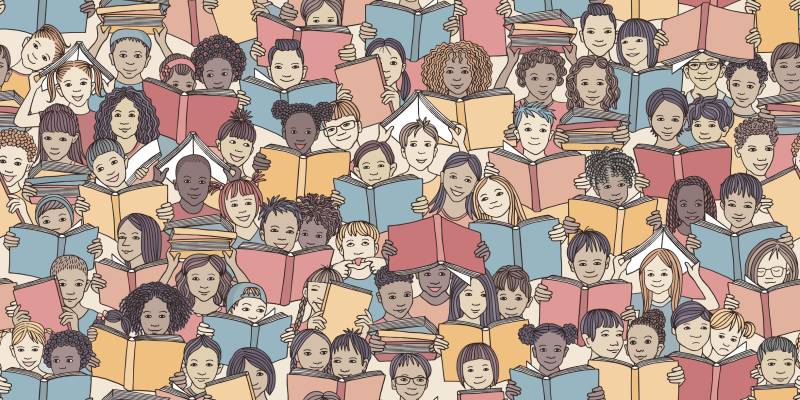
Key points:
- Look for a literacy platform that meets students where they are
- 4 components of an effective literacy ecosystem
- To start the school year off right, invest in literacy
- For more news on literacy, visit eSN’s Innovative Teaching hub
With a student population that’s roughly 85 percent Hispanic, our K-8 academy faces some interesting-but-not-insurmountable literacy challenges.
Our main program is HMH Into Reading for younger students and HMH Into Literature for the older students. A few years ago, we also adopted the SIPPS program, which provides systematic instruction for phonological awareness and sight words but required a lot of work on the teacher’s part.
Two years ago, our district started using Lexia English for our English Language Learners (ELLs), also with its Core5 and PowerUp programs. Each of the platforms were very effective for our ELL students, so we wanted to also open it up to students in need of general literacy remediation, and who needed a platform that met them where they were in the learning process.
Our students were pretty excited about using the literacy platform and our teachers liked the “low prep” nature of it. Once we saw that the students and classes using the platform were showing growth, we decided to apply its use as a school-wide goal. This is our second full year of having 100 percent of our school using these platforms.
Of course, technology itself is only as effective when it’s engaging, enlightening, and educational. Here are five steps we took to ensure that we covered all of those bases and more with our literacy platform:
1. Reward students for their hard work. We like to do things big here at Valley View. We put a “Lexia Spin the Wheel” in Larry’s office, where students spin as they hit milestones and win everything from ice cream to dress-down days to other prizes. This really gets the students involved and excited about learning. Jessica is the “Lucky Lexia Lady” with whom students share their accomplishments (I’m on level five, they’ll say as they’re rushing to get to their buses). Once the students started buying into the literacy platform, teachers followed suit because they saw just how excited their students were about it.
2. Carve out time during the school day. We noticed that the platform was being used quite often by the primary grades, but not as much with the older grades. We carved out time every Friday to make sure teachers were building the platform into their weekly centers or activities. And if they have an extra 15 minutes here or there, it’s also a great cool-down activity and perfect reset after recess. Having the time carved out on Fridays supports our schoolwide goal and ensures that we have systems in place to help kids be successful. This is important because we don’t have a take-home computer program, so we can’t rely on continued usage at home. We had to make sure they had that time to be successful during the actual school day.
3. Track progress on every level. We track activity and set “wildly important goals” (WIGs) focused on word study, grammar, and/or comprehension growth. This helps create a very consistent approach to literacy instruction. We show students how to practice a bit in each area and then stop to assess their progress. We’ll ask them questions like: What are your goals? Did you accomplish your goal for today? What did you like the most? What did you learn? Having a platform that offers very granular tracking systems has been extremely helpful. We use it to track school, classroom, grade level, and individual student goals. Our literacy platform then supports the latter by encouraging students to track, own, and celebrate their individual progress in the program.
4. Celebrate success as a team. We average out everyone’s progress and the teacher with the highest average gets a pizza party. We also have Title I paraprofessionals who identify specific students and celebrate their accomplishments. Just the other week, we had a schoolwide assembly where we announced the top student with the most units gained in every grade (those students get to spin the wheel). Highflyers are rewarded and anybody who meets the goal is rewarded with the monthly food truck. We’ll be barbecuing about 400 hamburgers next week for the kids who met their literacy goals. These are just some of the ways we celebrate success as a team across the whole school.
5. Don’t forget the soft skills. There are also some soft skills that are outside of the actual literacy and grammar that our students take away from the online literacy programs. They learn how to self-pace, motivate themselves, and manage their time, for example. They also learn stick-to-itiveness and grit. These are some of the soft skills that come with using the right literacy program and getting everyone “rowing in the same direction,” so to speak. Everyone’s working together, and it really shows.
That’s the beauty of it
Overall,we saw impressive results in both unit and level progress. It was important for us to set goals for our K-8 students to complete units in their respective literacy programs. So far, 75 percent of our students met the school goal, and that’s huge.
For our emergent bilingual students in particular, reclassification is a major milestone. Statewide, 10-11 percent of students reclassify with the Arizona English Language Learner Assessment (AZELLA). At Valley View, the school average is 18 percent reclassification in 2024 and 20 percent in 2023.
Before we partnered with our literacy provider, our ELA scores were stagnant. But for the last couple of years, we are enjoying remarkable growth in reading proficiency. With continued platform development, we expect this progress to accelerate even further. A few years ago, about 25 percent of our student population was three or more grade levels below in reading. We got that number down to just 13 percent within a year of implementing our literacy platforms.
This just goes to show that the systems we have in place are positively impacting our students and giving them the foundational skills they need.
When selecting a literacy platform, schools and districts should look for one that truly meets the children where they’re at. That way, you can focus instruction on increasing student achievement. If you’re truly focusing on instruction, you’re not teaching to the middle–you’re teaching to the high, medium, and the low. We know for a fact that during reading intervention time, each child is actually at their level. That’s the beauty of it.
With a student population that’s roughly 85 percent Hispanic, our K-8 academy faces some interesting-but-not-insurmountable literacy challenges. Featured on eSchool News, Innovative Teaching, Literacy, literacy, news, school, students, teaching, visit eSchool News






